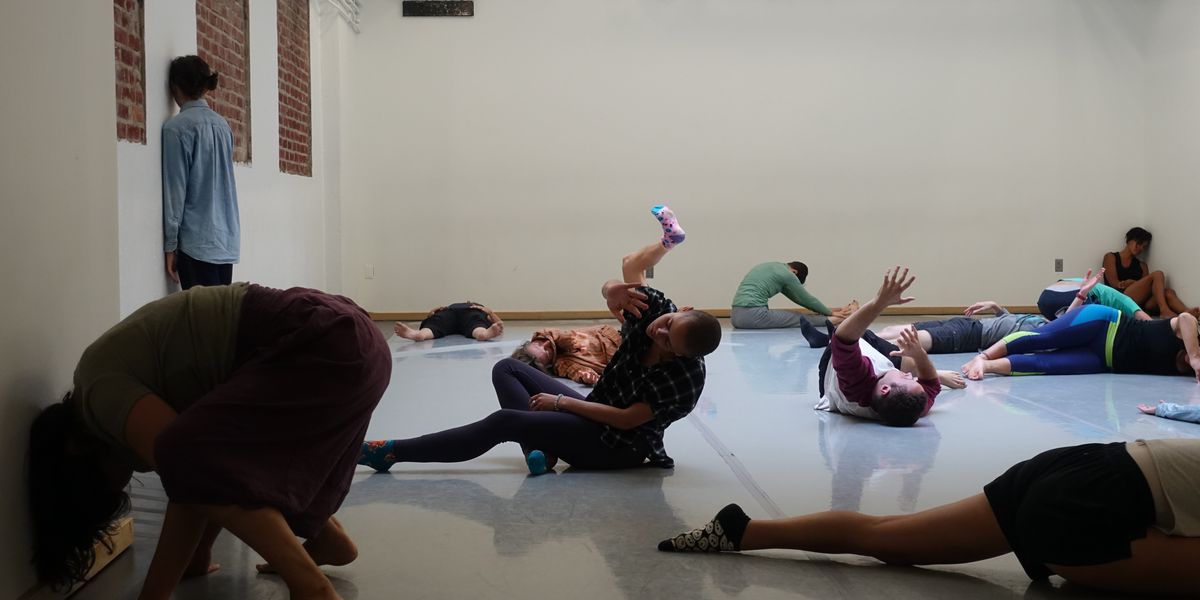We Tried It: Witchcraft – A Corporeal Practice
A quick scroll through Instagram will tell you that astrology and all things witch-y are all the rage. “There’s a lot of people speaking about magic,” says dance artist iele paloumpis, who teaches a class at Movement Research called Witchcraft – A Corporeal Practice. “It’s more in the public consciousness again.”
But for paloumpis, who has taught some form of the class since 2011, these practices have been a part of their life from an early age, having grown up in a family of “witches and mystics.” They chose to use the word witchcraft in the class title “as a feminist, queer reclamation of the idea of being a witch.”
We took paloumpis’ class for our “We Tried It” series to see how witchcraft can be relevant to dance artists:

The Experience
The two-hour class was divided into two sections: The first was devoted to conversation and the second to movement. “I like to get the left brain out of the way, so in the second part of class we can just be deeply embodied and intuitive,” says paloumpis. “Astrology is complex, so it does take a certain amount of brainpower to grasp it.”
Sitting around an altar containing objects signifying the four elements (water, ash for fire, feathers for air and stones for earth) as well as additional stones and a locket honoring paloumpis’ recently departed cat, paloumpis taught us some astrology basics, and explained what’s currently happening in the lunar calendar (waning crescent moon, moving through virgo, and a libra sun).
We learned that each sign is connected to a certain part of the body: For virgo, the nervous system, and for libra, the lower back and kidneys. Libra is also associated with balance, which we would play with during our improvisation, and virgo with pattern and ritual.
The second half of class, a guided improvisation, began with breathing on the floor. As the improvisation gradually intensified, paloumpis cued us with images relating to what we’d discussed: externalizing the inner workings of the nervous system, examining patterns in our movement and whether or not they serve us, and playing with being off-balance.
The class ended with a partnering exercise where one partner gently placed their hands on the other’s kidneys in support. (In addition to being connected to libra, kidneys are also associated with fear—perhaps due to their proximity to the adrenal glands.)
Throughout class, we listened to meditative music, and windchimes channeled the virgo element of air. “If we were to be working with the water element, I might decided to use the sound of a river or whales,” says paloumpis.
Every class, the improvisation prompts change, because the planetary energies have changed. Sometimes, paloumpis will use iconography from tarot cards to guide the improvisation.

Why It’s Relevant for Dancers
It’s fair to be skeptical about astrology, says paloumpis. But there are some things you can’t argue with: The moon’s influence on the tides, for instance. Since over half of the human body is water, it makes sense that the moon’s cycles might influence how we feel, too. (Not to mention the fact that menstrual cycles often align with lunar cycles.) There are also more births, deaths and accidents on the full moon, says paloumpis.
As dancers striving to know as much about our bodies as possible, a practice that might give us more information about them feels like a natural fit. Dancers who are curious how spirituality might fit into their movement practice make up a large portion of students, says paloumpis, but they also see lots of dancers who are dealing with injury or a recent disability. “People are often attracted to the class because they’re in a moment of transition,” they say. “They’re seeking to better understand their bodies or better understand the astrological implications we are feeling all the time but are not necessarily fully tapped into.”

If You Want to Learn More
Interested in incorporating esoteric ideas into your somatic practice? Paloumpis encourages dancers to think carefully about how you’re using them. “I’m very cognizant of spiritual appropriation,” they say. “People have a grab bag mentality of spirituality. It’s important to give credit where credit’s due and to check in about whether you’re exoticizing it and want to extract something from it.”
One simple way they recommend dancers get started: Keep a journal following your body’s response to the waning and waxing moon. See if you discover patterns in how your body responds.




